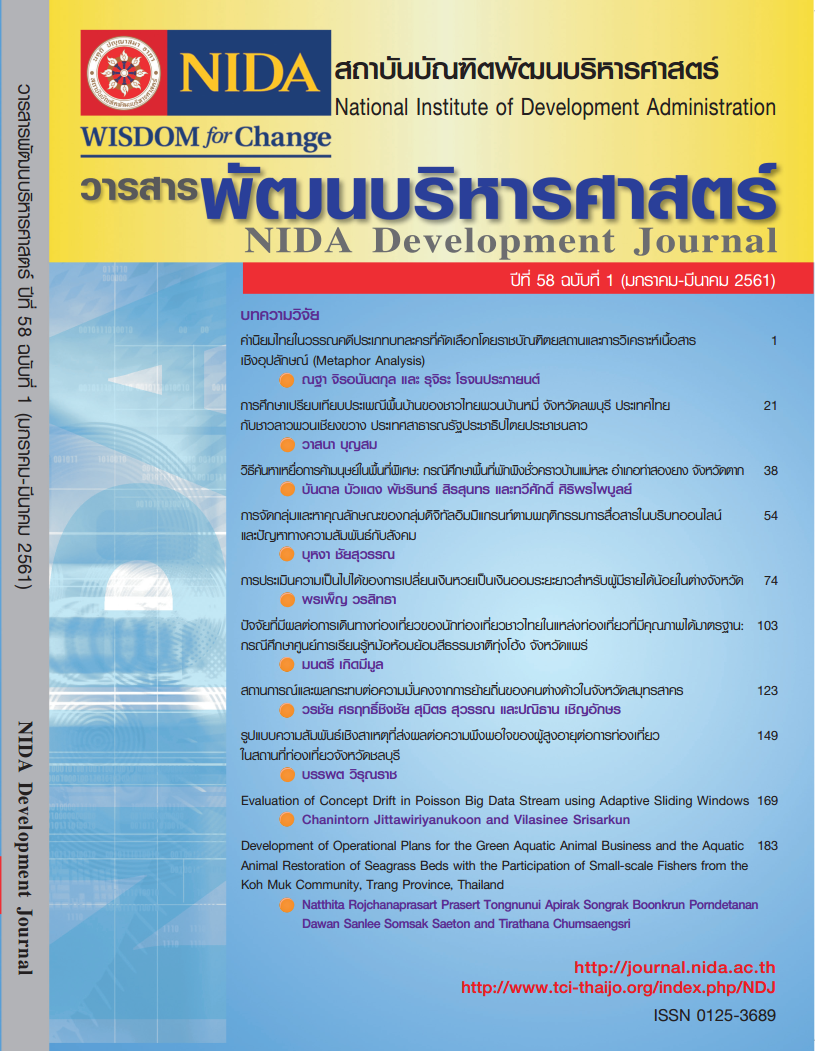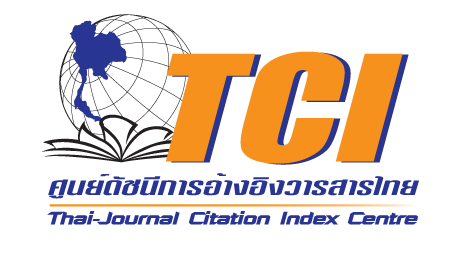An Evaluation of the Possibility in Reshaping Lottery Money to Long-Term Savings for the Poor in Outer Bangkok, Thailand
Keywords:
Lotteries, Long-Term Savings, Financial Investment, Low income GroupAbstract
This study surveys the behavior of the poor in savings and in buying lotteries, and analyzes the possibility of shifting lottery money to long term savings for the poor retirement program. Data used in this study are from preliminary survey of 4,800 observed poor in Thailand in outer Bangkok area. Results of the survey show that lottery is the most popular financial investment among the Thai poor in outer Bangkok, and there are few alternatives for them in investing their money with an acceptable return like lotteries. The results confirm that 80.49 percent of lottery buyers’ behavior in buying lottery supports the process of raising fund by shifting lottery money to long term savings.
References
Bernoulli, D. (1954). Exposition of a New Theory on the Measurement of Risk. Econometrica, 22 (1), 23–36.
Brenner, R. (1983). History - The Human Gamble. University of Chicago Press.
Brenner, R. (1985). Betting on Ideas: Wars, Invention, Inflation. University of Chicago Press.
Brigham, E. F. (1980). Fundamentals of Financial Management (2nd ed.). USA: The Dryden Press.
Douglas, A. (1995). British Charitable Gambling 1956-1994: Towards a National Lottery. London: Athlone Press.
Forbes, (1986), "The Lure of the Lottery," (Jan. 31), 302
Friedman, M., & Savage, L. J. (1948).Utility Analysis of Choices Involving Risk. Journal of Political Economy, 56(4), 279–304.
Gary S. Becker; Kevin M. Murphy (1988). A Theory of Rational Addiction. The Journal of Political Economy, 96(4): 675-700.
Guillén, M. F., & Tschoegl, A. E. (2001). Banking on Gambling: Banks and Lottery-Linked Deposit Accounts, Center for Financial Institutions Working Papers 00-25, Wharton School Center for Financial Institutions, University of Pennsylvania.
John Maynard Keynes (1936).The General Theory of Employment, Interest and Money by John
Maynard Keynes, Fellow of the King's College, Cambridge, published by Harcourt, Brace and Company, New York; U.S.A.
Kallick-Kaufmann, Maureen (1979), "The Micro and Macro Dimensions of Gambling in the United States," Journal of Social, 35(3), 7-27.
Kearney, M. S. (2002). State Lotteries and Consumer Behavior. Journal of Public Economics, 89(11-12, Dec), 2269-2299
Levin, S. (2008, July 25). Poverty leads to playing lottery. Pittsburgh Post-Gazette.
Markowitz, H. (1952). The Utility of Wealth. Journal of Political Economy, 60(2), 151–158.
Maynard, N., De Neve, J.-E., &Tufano, P. (2008). Consumer Demand for Prize-Linked Savings: A Preliminary Analysis. Harvard Business School Finance Working Paper, 08-061.
Marshall, A. (1920). Principles of Economics. (Revised ed.). London: Macmillan; reprinted by Prometheus Books. ISBN 1-57392-140-8.
Mobilia P. (1994) Gambling as a Rational Addiction. Journal of Gambling Studies. 9(2), 121-151.
Milton Friedman (1956), “The Quantity Theory of Money: A Restatement” in Studies in the Quantity Theory of Money, edited by M. Friedman. Reprinted in M. Friedman The Optimum Quantity of Money (2005), 51.
Minabe, S. (1975). A Time Deposit with Lottery Ticket. Public Finance-Finances Publiques, 30 (2), 222-230.
Morduch, J. (1999). The Microfinance Promise. Journal of Economic Literature, 37, 1569-1614.
Neumann, V., & Morgenstern, O. (1947). Theory of Games and Economic Behavior (2nd ed.). Princeton, NJ: Princeton University Press.
Nyman, J. A. (May 2004). Should the Consumption of Survivors be Included as a Cost in Cost-Utility Analysis Health Economics, 13(5), 417-427.
Laolerts, Pornsri. (2006). A Study of Lottery Buying Behavior and the Possibility of Shifting Lottery Money to Lottery for Savings: Case Studies of Mu Baan Tapieng and Mu Baan Sri Muang Mai, Srisaket. Unpublished Thesis, National Institute of Development Administration. (In Thai)
Manprasert, Somprawin. (2011). A Study of Situation, Behavior and Gambling Impacts in Thailand: Quantitative Study by Using Economic Model. Under the Project of “ A Study of Situation, Behavior and Gambling Impacts in Thailand”. Social Research Institute, University of Chulalongkorn. Funded by Thai Health Promotion Foundation. (In Thai)
Monkolchai, Chitti , et.al. (2007). Huay Bon Din. Faculty of Social Administration, Thammasat University. Funded by Office of the Permanent Secretary, Ministry of Social Development and Human Security. (In Thai)
The Government Lottery Office. (2007). A Survey of Opinion and Behavior about Gambling in Thai Society. (In Thai)
Vora-Sittha, Pornpen. (2012). The Possibility of Shifting Lottery Money to Long Term Savings. Research Center, National Institute of Development Administration. (In Thai)
Wichachan, San. (2010). A Legend of Siam Lottery. Bangkok: R.S.229. (In Thai)
Downloads
Published
How to Cite
Issue
Section
License

This work is licensed under a Creative Commons Attribution-NonCommercial-NoDerivatives 4.0 International License.





